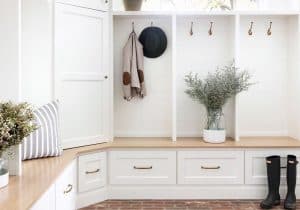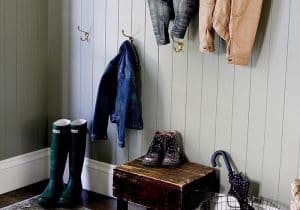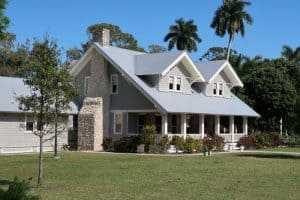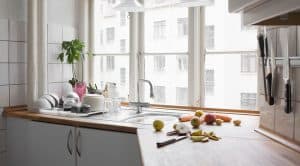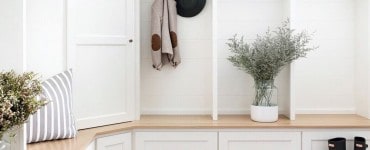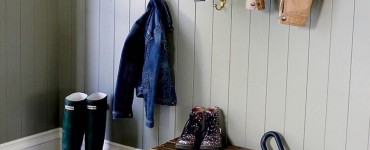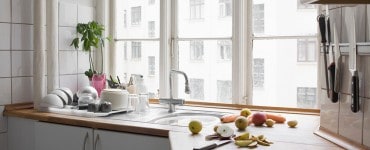When it comes to creating a functional and aesthetically pleasing home, understanding the differences between the foyer, mudroom, and porch is essential. Each space serves a unique purpose and plays a vital role in enhancing the overall functionality and appeal of your home.
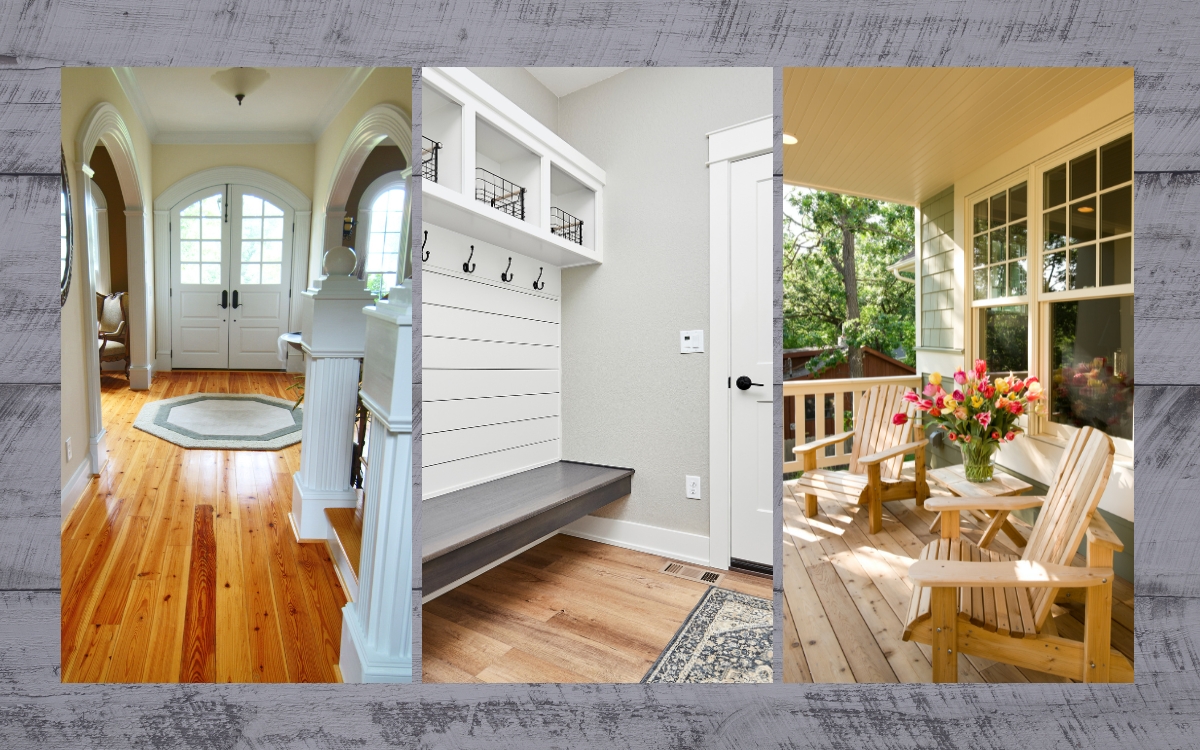
In this comprehensive guide, we will delve into the distinctive characteristics of foyers, the functional buffer zones known as mudrooms, and the delightful outdoor connections provided by porches. By the end of this post, you’ll have a clear understanding of how to make the most of each space, optimizing their usage to suit your lifestyle and needs.
Foyer: The Grand Entrance
What Is a Foyer?
The foyer, often referred to as the entryway or entrance hall, is the gateway to your home. It is the first space that greets you and your guests as you step inside. Serving as the transition between the exterior and interior, the foyer plays a vital role in making a lasting impression. It sets the tone for the rest of your home, offering a glimpse into your personal style and design sensibilities.
In essence, the foyer acts as a welcoming space, inviting visitors to feel at ease and providing a warm introduction to your home’s decor and ambiance. From large grand foyers in expansive estates to modest foyers in cozy apartments, this space exists in various shapes and sizes, each offering its unique charm and character.
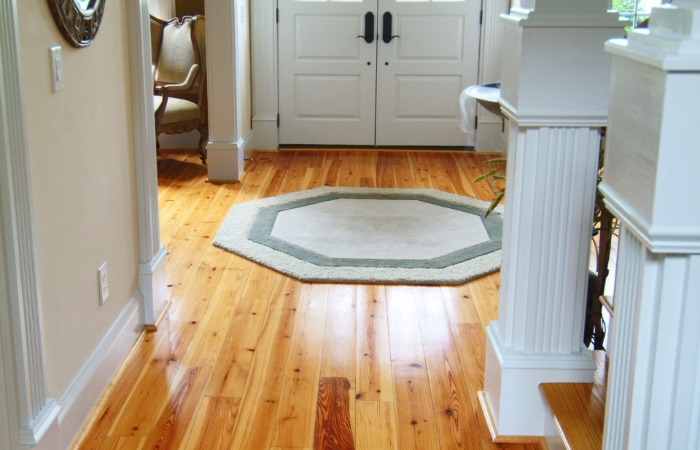
Design and Decor of Foyers
Designing a foyer requires a thoughtful approach, as it must strike a balance between functionality and aesthetics. The decor can range from minimalist and modern to traditional and ornate, depending on your preferences and the overall style of your home. Incorporating elements such as a console table with a decorative mirror, a stylish coat rack, or an artful rug can elevate the foyer’s visual appeal and functionality.
Lighting is a crucial aspect of foyer design, as it can enhance the ambiance and create a welcoming atmosphere. Pendant lights or a grand chandelier can add a touch of elegance, while wall sconces or floor lamps can provide a soft and inviting glow. The use of natural light is also essential, as it can make the space feel more open and inviting.
Mudroom: The Functional Buffer Zone
Understanding the Role of a Mudroom
The mudroom is a practical and functional buffer zone between the outdoors and the main living areas of your home. Originally designed to keep dirt, mud, and debris from being tracked into the house, the mudroom has evolved into a versatile space that serves multiple purposes. It acts as a transitional area where you can shed your outdoor attire, store essential items, and organize everyday belongings.
This utility-driven space is especially valuable for households with active lifestyles, pets, or changing weather conditions. By providing a designated area for coats, shoes, backpacks, and other outdoor gear, the mudroom helps maintain a cleaner and more organized living environment while minimizing clutter in the main living spaces.
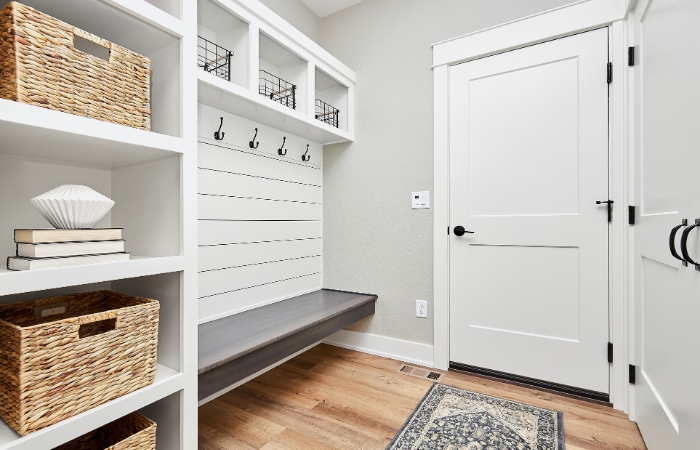
Essential Features in a Mudroom
To maximize the functionality of your mudroom, incorporating key features is crucial. Built-in storage solutions, such as cubbies, lockers, and shelves, offer designated spaces for each family member to stow their belongings neatly. Hooks and hangers provide a convenient spot for coats, hats, and bags, keeping them easily accessible yet out of the way.
Durable and easy-to-clean flooring materials, such as tile, vinyl, or even sealed concrete, are ideal for mudroom spaces, as they can withstand the wear and tear of muddy shoes and wet weather. Additionally, a waterproof mat or tray under the shoe storage area can help contain moisture and dirt, preventing it from spreading throughout the home.
Storage Solutions and Organization Tips
A well-organized mudroom is the key to its effectiveness as a functional buffer zone. Consider incorporating labeled bins or baskets for each family member to store items like gloves, scarves, and smaller personal belongings. Assigning a specific space for each family member’s belongings helps keep the area tidy and ensures everyone can easily find what they need.
To further streamline organization, consider adding a bulletin board or a chalkboard to the mudroom. These can serve as family message centers, allowing you to leave reminders, notes, or schedules for everyone to see as they come and go.
Additionally, a small bench or seating area in the mudroom can provide a convenient spot to sit while putting on or taking off shoes. It can also serve as a place to sort through mail, packages, or items before bringing them into the main living areas.
Porch: The Outdoor Connection
What Constitutes a Porch?
The porch is a delightful outdoor space that serves as an extension of your home, bridging the gap between indoor comfort and the great outdoors. It typically features a covered platform, often attached to the front, back, or side of a house. Porches come in various styles and sizes, ranging from intimate front porches with room for a cozy seating area to expansive wrap-around porches that offer panoramic views of the surroundings.
Traditionally, porches were designed to provide shelter from the elements, offering a shaded area to enjoy the outdoors regardless of the weather. Today, porches have evolved into versatile spaces that allow homeowners to relax, entertain guests, and savor nature’s beauty, making them an integral part of many homes’ architectural designs.
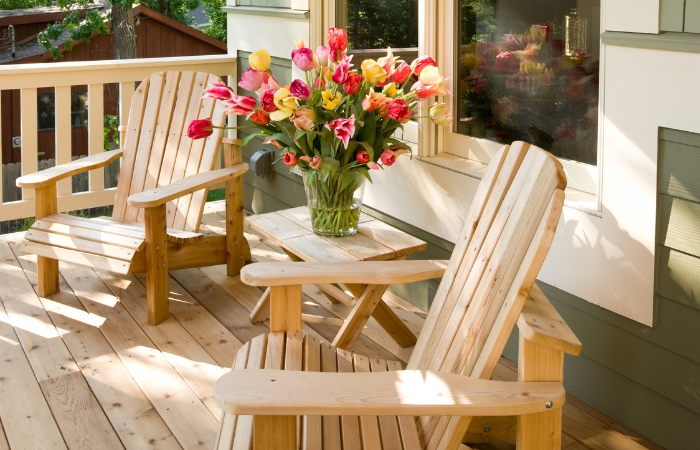
Porch as an Extension of Living Space
The porch serves as a seamless extension of your indoor living space, blurring the boundaries between inside and outside living. It offers a tranquil retreat where you can unwind, read a book, or simply enjoy a cup of coffee while immersing yourself in the natural surroundings. Whether you choose to furnish your porch with comfortable seating, a dining area, or even an outdoor kitchen, it becomes a versatile space that accommodates various activities and gatherings.
Many homeowners use their porches as an outdoor living room, complete with cozy furniture, decorative elements, and soft lighting. By creating a welcoming and inviting ambiance, the porch becomes a cherished spot where you can connect with family and friends or indulge in peaceful moments of solitude.
Ideas for Decorating and Furnishing Porch Spaces
When it comes to decorating and furnishing your porch, the possibilities are endless. Consider your personal style and the desired atmosphere you want to create. Comfortable outdoor furniture, such as lounge chairs or a porch swing, encourages relaxation and enjoyment of the outdoor view. Adding cushions, throw pillows, and blankets brings coziness and charm to the space.
Introducing potted plants and hanging baskets filled with colorful blooms infuses your porch with a touch of nature, enhancing its outdoor appeal. Consider using outdoor rugs or carpets to define specific areas and add a touch of warmth to the flooring.
Lighting plays a crucial role in setting the mood on your porch. String lights, lanterns, or sconces can provide soft and inviting illumination for evening gatherings or relaxing under the stars.
Porches: The Ideal Spot for Socializing and Gathering
With its inviting atmosphere and connection to the outdoors, the porch becomes the ideal spot for socializing and gathering with family and friends. Hosting casual get-togethers or small gatherings on the porch allows you to enjoy the company of loved ones while relishing the beauty of nature.
During warm summer evenings, porches become the perfect location for outdoor dinners, barbecues, or sipping refreshing beverages. With the right lighting and seating, your porch can be transformed into an enchanting venue for memorable gatherings that blend indoor comfort with the beauty of the natural world.
Comparing and Contrasting the Three Spaces
Location and Placement
The first point of comparison between foyers, mudrooms, and porches lies in their location and placement within the home. Foyers typically occupy a central position near the main entrance, welcoming guests as they step inside. Positioned between the exterior and interior spaces, foyers act as the initial point of contact, setting the tone for the home’s interior design.
On the other hand, mudrooms are strategically situated at secondary entrances, often connected to the garage or backyard. Their placement allows them to fulfill their functional role as buffer zones between the outdoors and the main living areas. Mudrooms serve as a convenient space to store outdoor gear and provide an organized transition from the outside world to the inner sanctum of the home.
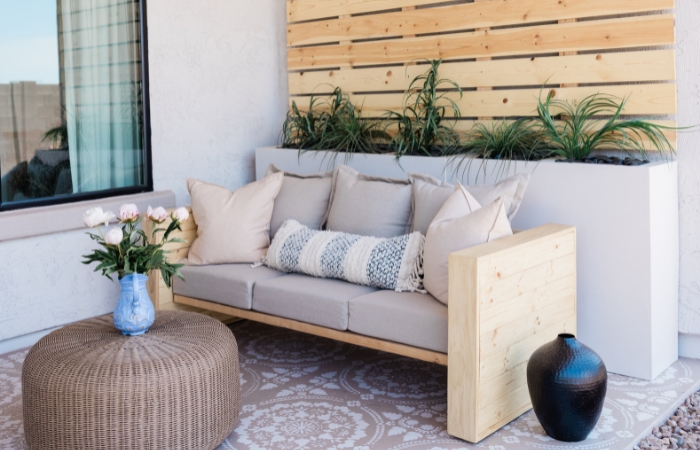
Porches, as outdoor spaces, are naturally located outside the main structure of the home. They can be found at the front, back, or sides of the house, embracing the surrounding landscape and offering captivating views. Porches connect seamlessly with nature, providing an outdoor oasis where residents can enjoy fresh air and the beauty of their surroundings.
Functionality and Purpose
While all three spaces contribute to the overall functionality of a home, their individual purposes differ significantly. Foyers primarily serve as a welcoming area, offering a place for guests to arrive and be greeted upon entering the home. Their design often emphasizes aesthetics, creating a grand entrance that leaves a lasting impression.
Mudrooms, on the other hand, prioritize practicality and organization. Their purpose is to facilitate the efficient transition from outdoor to indoor living by providing storage solutions for shoes, coats, and other outdoor gear. Mudrooms help keep the rest of the home tidy and clutter-free, acting as a functional hub for busy households.
Porches excel in their role as versatile outdoor spaces, bridging the gap between indoor and outdoor living. Their functionality extends beyond the home’s physical structure, offering an inviting space for relaxation, socializing, and enjoying the natural environment. Porches provide a peaceful retreat to connect with nature and appreciate the changing seasons.
Design and Aesthetics
In terms of design and aesthetics, foyers, mudrooms, and porches each boast their unique style. Foyers often showcase grand features such as soaring ceilings, decorative lighting fixtures, and elegant furnishings. Their design typically aligns with the overall theme and decor of the home’s interior, creating a cohesive and visually stunning entryway.
Mudrooms emphasize functionality in their design, incorporating practical elements such as built-in storage, durable flooring, and easy-to-clean surfaces. Their layout centers on efficiency and organization, ensuring that the space can handle the hustle and bustle of daily life.
Porches offer an array of design possibilities, from cozy and rustic to contemporary and chic. Their aesthetic can be influenced by the surrounding landscape, architectural style, and the homeowner’s personal preferences. Porches often feature comfortable outdoor furniture, inviting textiles, and greenery to create a warm and inviting atmosphere.
Choosing the Right Design for Your Home
Space and Layout Considerations
When it comes to selecting the right design for your home’s entryways, understanding your space and layout is paramount. Assess the size and layout of your foyer, mudroom, and porch to determine how each space can best serve its purpose. If you have a spacious foyer, you may opt for a more grand and elaborate design, with eye-catching decor and statement pieces. On the other hand, if your foyer is more compact, focus on clever storage solutions and space-saving furniture to maximize functionality.
For the mudroom, consider its proximity to the main entry points and its accessibility from other areas of the house. Design the mudroom layout to ensure easy flow and efficient use, allowing family members to quickly grab or store items without hindrance. When it comes to porches, take advantage of the surrounding landscape and architectural elements to create a seamless outdoor connection. Design your porch to complement the overall style of your home, whether it’s cozy and rustic or modern and sleek.
Combining Spaces for Maximum Efficiency
Integrating the design of your foyer, mudroom, and porch can enhance the efficiency and visual appeal of your home’s entryways. Create a cohesive transition between these spaces, ensuring a smooth flow as you move from the outdoors to the indoors. Use complementary color palettes, materials, and decor elements that tie all three areas together.
Consider how the design of each space can complement its adjacent counterparts. For instance, if your mudroom is visible from the foyer, design it with aesthetic elements that seamlessly blend with the foyer’s overall decor. Similarly, ensure a harmonious connection between your porch and the interior spaces visible through its entryway. By thoughtfully combining these spaces, you can create a unified and well-designed entryway experience.
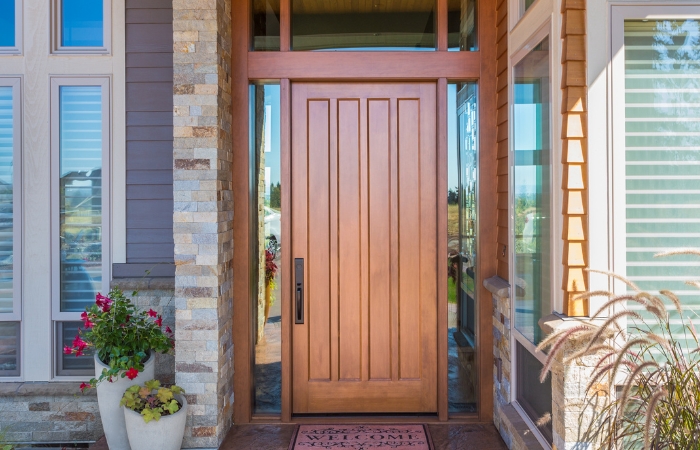
Personalizing Your Entryway Spaces
As you contemplate the design for your foyer, mudroom, and porch, don’t forget to infuse each space with your personal touch. Incorporate elements that reflect your family’s interests, hobbies, and individual styles. Hang artwork or family photos in the foyer, showcasing cherished memories and creating a welcoming atmosphere.
Personalize your mudroom with storage solutions that cater to the specific needs of your household. Customizable storage units, such as lockers or cubbies, can be designated to each family member, promoting organization and individuality.
In the porch area, add decorative elements that align with your preferred outdoor lifestyle. Consider adding cozy seating with cushions and throws, as well as accent pillows that showcase your favorite patterns or motifs.
Balancing Functionality and Aesthetics
When making design decisions for your home’s entryways, strike a balance between functionality and aesthetics. While you want your entryways to make a strong visual impact, they must also serve practical purposes. Opt for furniture and decor pieces that are not only stylish but also functional. For example, choose a console table in the foyer that offers both display space and a catch-all for keys and mail.
In the mudroom, focus on durable materials that can withstand heavy use and exposure to the elements. Look for weather-resistant materials for outdoor furniture on the porch that require minimal maintenance.
Remember that a well-designed entryway should not only impress visitors but also enhance your daily living experience. By considering both functionality and aesthetics, you can create welcoming and efficient spaces that enrich your home.
Conclusion
In conclusion, the foyer, mudroom, and porch each play a pivotal role in enhancing your home’s functionality, comfort, and aesthetic appeal. The grand entrance of your home, the foyer, sets the tone for the rest of your living space and welcomes guests with its distinctive charm. A well-designed and organized mudroom acts as a functional buffer zone, keeping clutter and outdoor elements at bay while streamlining your daily routines.
On the other hand, porches provide a delightful outdoor connection, inviting you to relax and unwind in the fresh air while still being an integral part of your home’s overall design. Understanding the unique attributes of each space empowers you to make informed choices that best suit your lifestyle and needs.


